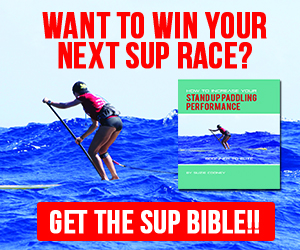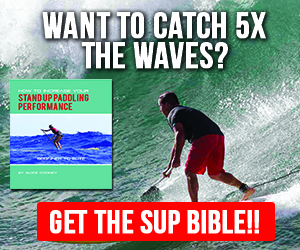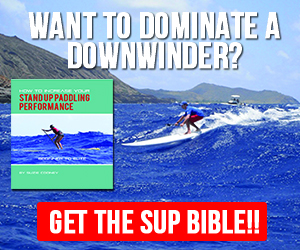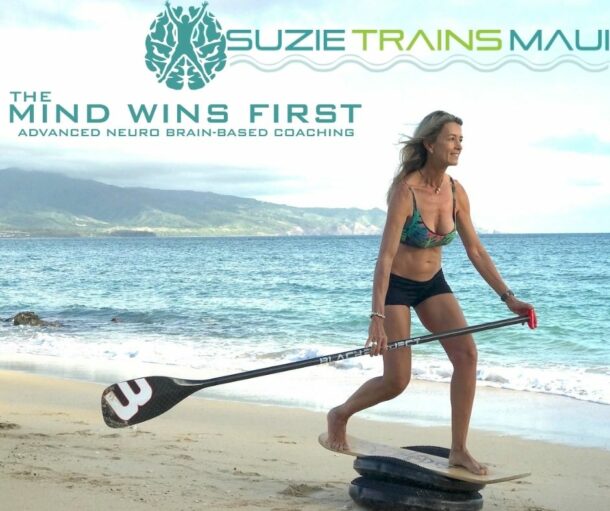3 Pro Level Winning Training Tips For
This SUP Season
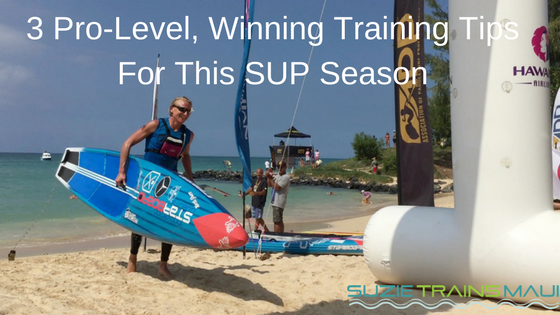
Sonni Honscheid is one of my favorite SUP athletes and she is an incredible person. Go Sonni!
These are my 3 pro level, winning training tips for this SUP season and 3 big winning game changers to help you smash it this year. I have lots of inspirational photos and videos all in this article.
So you ask, should I be reading this article since I’m not on any big tours or I haven’t even entered my first SUP race? Is this article for me? Absolutely.
And if you are a pro take a moment, perhaps I can help you just a little clean the cobwebs or make room for some new training strategies. Some of these tips may just be reminders or a fresher way to look at what you already know. This article can help you keep your name on the leader board to the next heat and hopefully to the podium.
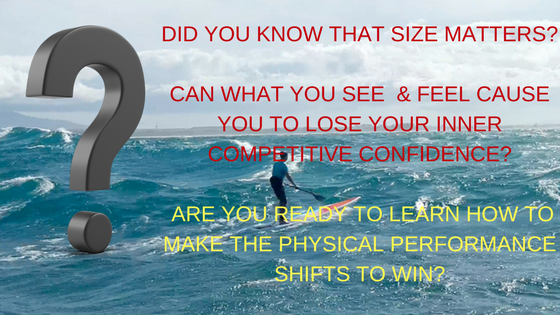
You can bet I’ve seen it all, I’ve trained the best and now I’m witnessing an incredible sea of new talent swarm the world of SUP in all regions of the world and in all disciplines. From where I paddle and live on the small island of Maui, which is still considered where SUP really took off; I am watching this sport make history with a few new faces in many new places.
It’s true that our world of SUP is changing at warp speed and it’s still evolving, and shifting a bit worldwide at all levels. There are high hopes and strong efforts moving forward that one day stand up paddling will reach Olympic status. The tours are getting broader and bigger, the world-ranking point spreads are constantly changing, local races are blowing up with record attendance and it’s only May. I can barely keep up.
Nowadays, the pros are expected to be amazing at every single discipline at all times. This is not a bad thing but the race formats now are getting so interesting that each race could have a combo of surf, to flat water, downwind and then miles of brutal hell. This seems to be the “norm”. Some events are broken up in two parts over a full weekend, with the same performance expectations, back to back with little to no recovery time. Brutal.
Certain paddlers are often known “specialists” at flat water, big surf, downwind or distance. It’s very difficult to consistently do well in every single discipline, but there are a few that are doing just that.
As a trainer though, the big question is what and how can you create early on, or keep developing; to keep that competitive edge and keep evolving and learning to continue to perform better?
If you’re a high-level paddler who has been at the top for some time, what are you doing to make changes in your training to keep fresh? What are you doing to gain new strength, or adopt and adapt to new ways of approaching your race strategy to keep you on top? How will you keep pushing harder to keep up with the new talent literally tapping at your tails and the rails of your boards?
I’m so glad you asked. And now your lesson begins, so dig in.
Whether you’re a seasoned ranked pro or a first time SUP competitor, now is the time to review and implement these three (3) SUP performance training tips to help you stay on top, win and maintain a stellar season.
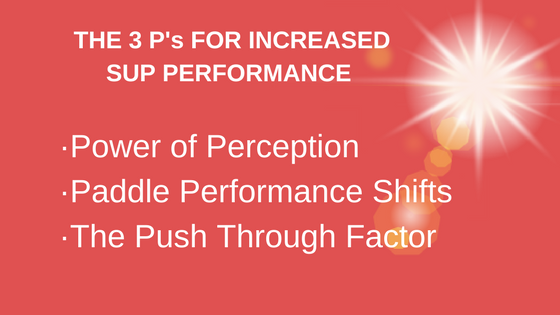
I call these the 3 P’s to increase your SUP performance. Learn them, practice and perfect them and keep in your personal SUP performance weapons bag at all times.
The Power of Perception
Paddle Performance Power Shifts
The Push Through Factor
My 3 Ps in SUP performance is a powerful combination that will require you to peel back some layers of carbon and look for the stress cracks and holes that need to filled or smoothed out. Perhaps you’ve got some rough spots in your paddling stroke, your training approach is taking on water or your brain is clouded with memories of a horrible race where you bonked and that has totally rattled your confidence. Sound like you?
Tighten your leash, here it is:
 The First “P” : Let’s talk about the word perception. The word perception is THE MOST POWERFUL word we can use as a mental and visual tool. It will allow you to see and feel victory now at this present moment, tomorrow and into the future. The word perceive, which “perception” is derived from; has sort of sixth sense magnetic force field that glows that goes way beyond the SUP podium.
The First “P” : Let’s talk about the word perception. The word perception is THE MOST POWERFUL word we can use as a mental and visual tool. It will allow you to see and feel victory now at this present moment, tomorrow and into the future. The word perceive, which “perception” is derived from; has sort of sixth sense magnetic force field that glows that goes way beyond the SUP podium.
Perception – defined as the ability to see, hear, or become aware of something through the senses. Wow, or how about this, “a way of regarding, understanding, or interpreting something; a mental impression.”
So now let’s focus on you and your perception only of yourself. Forget about the other paddlers around you, or the ones you may battle in a future race. Remember, you are the only one that matters. You can’t control the other paddlers’ feelings, thoughts or actions. So we must ask ourselves:
- How do you perceive yourself? First and foremost as a person, second as a competitor.
- How do you think others perceive you? Do people see you as an athlete?
- When you carry your board to the water’s edge, how do you appear
and feel in your mind?
These questions are designed to make you think and almost step outside of yourself as an observer to ponder and grow. I’d like you to take your time with each one and really be honest and notice if your answer(s) changes before or after a recent win or failure.
Starting with our own self-perception. One of my coaching strategies that really help people shape a healthy self-perception, is I remind or suggest to surround yourself with people that bring you up, not bring you down.
Identify paddlers in your circle who are just awesome humans and those that are fun and super inspiring to be around. Ditch the ones who may be a gossip, put others down or just give out a weird vibe. Move away from the energy suckers or those who may not have similar goals. It’s okay to be selective of whom you hang or train with. It’s important because it will ultimately form how you perceive yourself too and help you increase your overall performance outcomes.
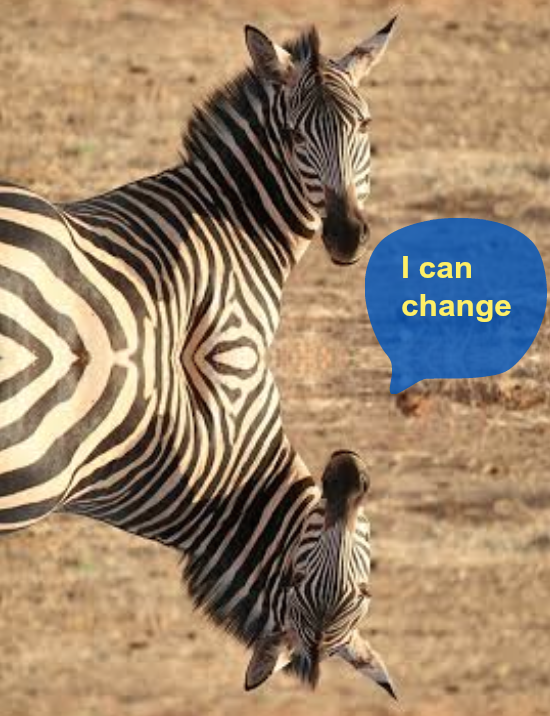 If you don’t like how you perceive yourself as a person, or your reflection in the mirror causes you to quiver, then change yourself. It may take some work, but you have the power to have a positive self-perception of yourself. There is also nothing wrong in asking for help or a little guidance.
If you don’t like how you perceive yourself as a person, or your reflection in the mirror causes you to quiver, then change yourself. It may take some work, but you have the power to have a positive self-perception of yourself. There is also nothing wrong in asking for help or a little guidance.
As for you being perceived as a competitor and how you perceive yourself, if you consistently show up well prepared; – meaning well rested, well trained, well hydrated, gear in check with food in your belly; all of the key internal and external factors will similarly exude the perception factor of success and a competent competitor. A, the likelihood of you placing well is high. B, people will notice and this gives your competition one more thing to worry about! Ha!
It totally helps if you are a world-ranked pro and consistently in the top 25 or 10, you will be automatically feared and noticed as a competitive threat. Not to worry if you’re not on tour yet. Heck, just showing up well prepared like I said above, race ready even when you train; people will also take notice.
You show up with a half eaten weinerwrap dangling from your mouth, maybe your fin is put in backwards, you’ve got POG in your Camelbak and you just casually get in the water a minute after the start; well you’ll possibly be perceived as that person who barely shows and people wonder WT…..? Every sport has one or two.
So as I wrap up this first performance P to get in check or make adjustments to your self-perception at all levels, every time you walk to the water’s edge I want you to see the most amazing SUP athlete you’ve ever seen. Now maybe for you, thinking of a SUP athlete you admire who may be similar to you who is calm, quiet and stealth and fierce. I think of the likes of pros like Sonni Honscheid, Kody Kerbox, Connor Baxter, Zane Schweitzer or up and coming Ryan Funk. These peeps to me are all great humans and great paddling athletes.
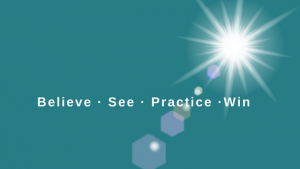
At the end of the day, the race or this journey we call life, the most awesome is you just being you and you being confident and happy with your perception of you. We all have the opportunity to better ourselves as a person AND as an athlete. Your own unique qualities, your own self worth, just as you are, is all you need to feel and perceive yourself as a winner.
If you like stuff like this, I really go way deep and talk further about how to get in the “zone” who and why we perform our best there. Learn more and refer to the most popular Chapter 7, The Mental Part, in my book, How to Increase Your Stand Up Paddling Performance, Beginner to Elite. click here
 Paddle Performance Power Shifts ( 2 parts )
Paddle Performance Power Shifts ( 2 parts )
Maybe it’s time to get a total overhaul on your stroke and/or of your power delivery systems.
Your stroke technique might be pretty sweet and you seem to do okay, but like everything you do, there are always ways you can make it better so you can be stronger and faster.
One particular area I’m going to focus on is how you can literally best size yourself up. That’s where we can say something a bit cheeky here:
Your size matters
Now don’t get all flustered, gloat or be embarrassed. I’m talking about your height, weight and limb length and other physical attributes of your body type. Literally the length or lack of can make a huge difference in your currently learned paddling technique.
For example I have really long arms and I am not the best at doing push ups nor do I have the fastest SPM stroke per minute, but make up for it downwind surfing and my footwork. Ha!
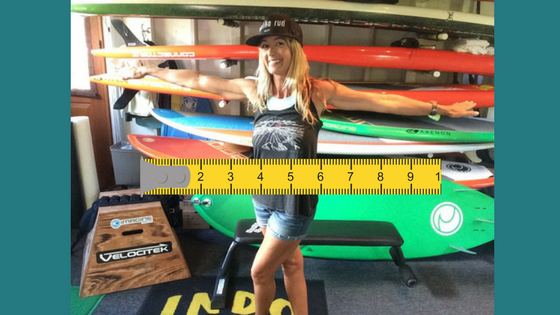
Below I’m going to highlight how your particular body type and your current stroke may not be the best match for you. That being said, this alone could be causing you to go slow, paddle in circles (I swear I’ve seen this); or not be as efficient as you could be. Read more in the next few paragraphs.
Part two of this section, making the power shift, I want you start thinking of new ways you can tap into new or forgotten sources of extra power. Then I want you to add some elements to your training to help you deliver more power. It’s how and where you access the power from and then the delivery path of that power; that will help you go faster.
Part One: Stroke, When Size Matters
Part Two: Power Delivery Shifts
Stroke, When Size Matters: I make no claims to know exactly what is the best stroke or technique that will be best for you. Everyone and their dog will have an opinion that’s why I’m oh so careful to keep my mouth shut and observe and suggest. BUT, if it’s time to make some changes in your own stroke and when you begin to study and evaluate your technique know this:
Your body type, height, arm length, torso length, experience and level of fitness is what will ultimately dictate the best and most powerful stroke for you. For example, when I’m training and doing laps in the harbor, I often see Connor, Kody, and Ryan Funk doing the same and it’s fun to watch their different styles and how they deliver their power. I like to observe to see how they’re making that board go.
Connor and Kody round the buoys with their long arms, their tall sleek frames along with years of experience, display sort of a hypnotic, smooth greyhound fluidness. Ryan has a different body type and while they are all on 12’6s and keeping a good chase pace; Ryan’s reach is a little bit shorter yet he is as smooth with a lot the power coming quietly from his hips.
The other body type of a paddler, may present with gigantic biceps and chests that are huge barrels. I’ve seen quite a few lately and some are women too. They are beasts for sure and I wonder how they can even unbend their arms to paddle or brush their hair. Their strokes are short, they do not have a long reach and they are very explosive and they seem to power through buildings.
Often these paddlers are shorter may have a higher cadence because their shorter arm length in general allows them to have more SPMs (strokes per minute). Someone who is much taller with a longer reach may have less SPM but use their length at the catch to leverage more power sooner. This is also good.
You might be so hard-wired in your head that you have to paddle like so and so and he or she said this or I watched that video, and so on. Pull the fuse, unplug and take a good look at yourself, literally.
Review and measure your personal body dimensional make up. Perhaps customize your technique that compliments your body type. You can’t reach as far if your arms just don’t go that far. So modify but don’t sacrifice power through poor technique.
For example, when I coach people who seem to be in a rut, making a few changes with their stroke to best compliment their arm length for example, can make a full minute difference in their training. They’ve had an “ah ha moment” and say, “thank you, I’ve been trying for years to reach as far as possible without falling in and I’ve felt I’ve lost so much power.” They discover if they keep the power closer to their body, they’ll have way more power per stroke and not waste it on a long reach.
Look around next time and observe others or watch some racing videos how other paddlers use their body type to his or her advantage.
This video I produced of the recent Maui leg of the APP World Tour out of Maliko Gulch. I slowed it down on purpose so you could see all of the unique styles and study their stroke reach and technique. It’s totally cool: https://vimeo.com/208572890
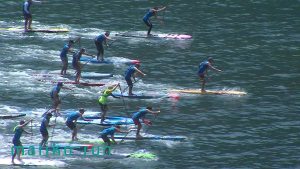
Maliko Downwind SUP Race Maui Pro AM APP World Tour 2017 from Suzie Cooney on Vimeo.
As for board length, size can matter here too. You may be in a 12/6 or 14ft division but it’s the paddler on the board that makes it go. But, if you’re in an open division and you have a choice, you could be just as fast on a 12/6 vs. a 14 and a 16ft board because of your body type. I’ve had all kinds of experiences not choosing the right board wishing I had this or that and sometimes kick myself knowing better especially on a crossing when the wind dies.
For instance, if you’re heavier or lighter, you might be better suited to pull less material and you can go just as fast as the next person. Experiment during your training sessions to see. Some of my clients compete in the elite open on 17ft rudder boards and some are smashing it on 15ft rudder boards or even a fixed 14. It’s all over the map really on what you manage most efficiently. And of course your board material, shape etc. will also assist.
This may seem like a no brainer, don’t forget your paddle length. Although trends go up and down in shaft length and blade widths, remember you are made how you’re made. Sometimes either sticking with what you have that works great for you simply works. Don’t feel the pressure of “everyone else is doing it” to switch, but definitely consider it and learn what works best for you.
 Try lots of different blade widths, shapes and lengths. If your paddle is too short, don’t blow out your low back in sacrifice for a win. You could be out all season. Opposite of that, don’t think an extra long paddle will give you extra long reach. You can also cause great upper back strain if you do this. A super wide blade can also tear up your shoulder.
Try lots of different blade widths, shapes and lengths. If your paddle is too short, don’t blow out your low back in sacrifice for a win. You could be out all season. Opposite of that, don’t think an extra long paddle will give you extra long reach. You can also cause great upper back strain if you do this. A super wide blade can also tear up your shoulder.
It’s awesome that we’re all made so differently as it keeps racing way more fun and interesting. You can get botox to smooth your wrinkles but you can’t make yourself taller. You CAN train smarter with what you were given and we’ll get into that in this next section.
Part Two: Power Delivery Shifts:
It may be time to make a shift to get unstuck and out of a performance rut. You can always make changes in your training and mindset to help you bust through some power blockages.
In an all out grind to the finish, or whether you’re sprinting off the start; both require insane amounts of raw, crazy power to help you win or get you into position to win.
What is it that some of these top level athletes harness that allow them to propel those final powerful strokes to victory? How are they training and what are they doing different?
Take that crazy recent finish between top two world ranked, Mo Freitas and Connor Baxter on the Japan leg of the APP world tour. Connor had a decent gap to fill and before you know at the final 30 seconds he’s on the same wave with Mo. It was nail biting.
Connor and Mo step on the gas, neck and neck every stroke. To the beach, Mo stumbles and Connor wins by one second!! Unbelievable.
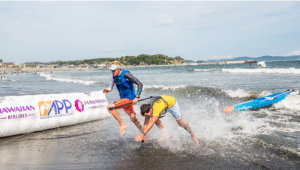
Watch the video here of this spectacular finish:
Congrats to all the racers. I think I’ve watched the video ten times. That was unlucky for Mo, but that distance race was brutal. A full hour of grinding upwind and downwind, Connor fought to get to second. He accessed tremendous amounts of power from the beginning to the end. How does he do it? I can’t tell you all of his secrets, but if you want to be top level, or remain there, it’s time to evaluate where you can unharness more untapped power.
Here are my top 5 SUP Performance Power Shifts Highlighted:
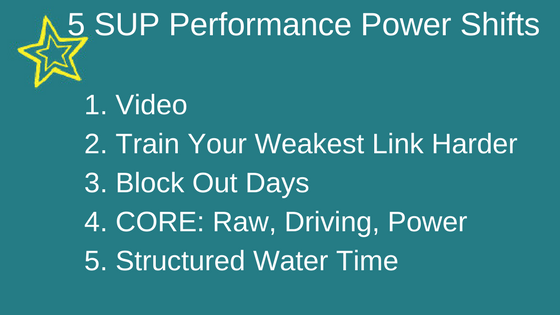
1.Video: I think one of THE best tools for you to begin this power shake down, is to have someone take a video of you paddling. Or like some of you, you’ve sent me your videos and I’ve been able to see immediately where you can get more power to move that board faster and more efficiently.
As a trainer first, paddler second; I’ve studied the body in motion for years. I’ve helped put people back together literally and have seen them get back into play, stronger, faster and better.
With the knowledge I’ve gained I can see in a few seconds exactly where you might be slipping a stroke, almost as if you were slipping a gear in a car or on a mountain bike. Get the idea?
Your goal is to deliver as much power per stroke in every way possible to propel that board smoothly, quietly and efficiently. I tell people if you’re slipping gears, you’re off a bit and rattling along like a loud junked car, so too will your board be loud and slow.
2. Train Your Weakest Link Harder: I’m specifically talking about muscles. Everyone is guilty of training first or more often in a routine, what we’re the best or strongest at. Sound familiar? You know the dude with the huge biceps at the bench in front of the mirror, pumping all day long?
Identify your weakest link. I can tell you that most people say their abs are their weakest, then their upper back. Because we are all so gifted and born with this or that, we have to get out this rut and fast and get to work on the weak parts. Just do it.
Really take a look at and review your current land workout routine. Discover where you can add and/or mix up some specific exercises to help you become more equally balanced in your strength.
I’m also a huge fan for men AND women to pump up the arms and upper body a bit. You need total body power at all times, for every stroke. Don’t need to get huge, just train equally the chest, biceps, triceps and upper back. Bulk can get you through, but light and lean strong muscle is cool and will give you longer lasting endurance.
If you’re constantly compensating and relying on muscles that you know are strong, think of all the paddle power you could have to increase your overall performance? Training all parts equally is key and the weaker ones a little more until all the muscles consistently perform and deliver.
3. Rest and Recovery: “block out days”
I hear this the most on how hard it is to get the rest one needs. This is especially tough if you’re traveling different time zones or you’re working a crazy job with long hours. If you continue down a path of lack of sleep, your body will revolt. It’s that simple. I have a whole section dedicated to this topic in my book, all about traveling and paddling, nutrition and more.
The long lasting effects of being overtired can cause short or long-term burn out. You might get sick more often and your body can’t then repair at a faster more efficient rate. Ultimately you could also be setting yourself up for injury.
Take your training app or your print outs or however you track your training, and add at least one “block out day”. These work best after your big race. It is a big luxury but the best training gift you can give to yourself.
Some SUP athletes I’ve experimented with found that one “block out day” a week before a big channel crossing or something heavy, really helped too. For those who did it before a big race, they reported they had less stress and pre-race anxiety and great results.
This means you block out everything from texts, no TV, no people and no training. You start your block day with a great meal and you pay great attention to your body and the mental space you’re in.
Do some visualization work of every muscle in your body being totally powerful and super explosive. Create in your mind the start of the race, mid way and the finish. Listen to the birds or walk on the beach.
4. CORE: Raw, Driving Power: You’ve heard it a thousand times, and now you’ll read it again. It’s the main muscle group responsible for exuding tremendous amounts of real, deep driving power. Everything else, like your shoulders and your ear lobes, are just accessories. (Note, the core is not just the abs. It is a combination of your deep pelvic floor muscles, your low back, hips, obliques top and lower regions of abs) “everything excluding your extremities”.
I mentioned Ryan Funk earlier. He is Starboard’s newer team rider and I’ve had the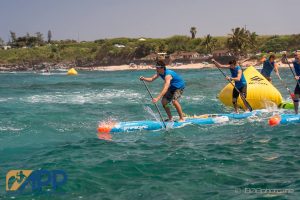 pleasure of paddling with him and training him too. I’ve watched him develop over the past couple years into a SUPER fast and stronger paddler. And when we’re on Maliko, it’s crazy to see him drive the power from his core, to his hips (part of the core) to his knees, to his feet, to the board. I know for a fact that he is purposely incorporating this concept to paddle faster. He gets it.
pleasure of paddling with him and training him too. I’ve watched him develop over the past couple years into a SUPER fast and stronger paddler. And when we’re on Maliko, it’s crazy to see him drive the power from his core, to his hips (part of the core) to his knees, to his feet, to the board. I know for a fact that he is purposely incorporating this concept to paddle faster. He gets it.
If you’re new to the scene, this means that you can’t just rely on your upper body with a stagnant lower body. Each stroke’s power comes from the deepest part of your pelvic floor where all motions begins in everything we do.
I also mentioned earlier, if your abs (a component of the core) are truly weak and out of shape, you will not be able to make this power shift. If they are super strong, rock hard 12 packs, hopefully you’re utilizing them before the blade hits the water for every single stroke.
I’ve probably written 10 or more articles on this but it keeps coming up because it is important. If you’re not tuned into by now what the core really is, check out Chapter 2, also in my book titled “How NOT to be An All Arm Paddler, It Begins with The Core”.
5. Water Time, Structured Training: You gotta have a plan every time you get to the water’s edge. Ideally you’ve got your entire month written out, on your ipad or smart phone, or printouts based around your year goals, then broken down for each single race.
So just like training the weakest link on your body, get to work on the more difficult tasks on the water. If it’s turns, then practice those first. If it’s interval sprints, don’t over do it to save energy and time for other drills and to cool down. There’s NO right formula for any of this it’s “how” you dedicate yourself, plan and make adjustments along the way to make each training session count.
A lot of you are into the community group training, which is awesome. Make sure your time is structured with a plan. Socializing is fine, but get the work done.
If you’re on the road touring, hold yourself accountable to your time and make it count. Even if you’re not feeling 100% every time you are scheduled to paddle do the best you can and push within reason. Ah, the “push” part.
 The Final 3rd P: The Push Through Factor
The Final 3rd P: The Push Through Factor
What makes stand up paddling so amazing as a highly competitive and total- body demanding sport, is the tremendous amount of mental AND physical discipline it consistently takes to do well in all extremes, all conditions and in all course formats.
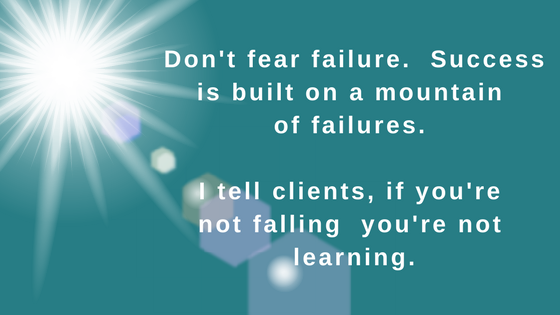
From combo sprint courses to the “BOP style”, or for one of the most recent, touted as the longest SUP distance race, the 40 mile circumnavigation of the
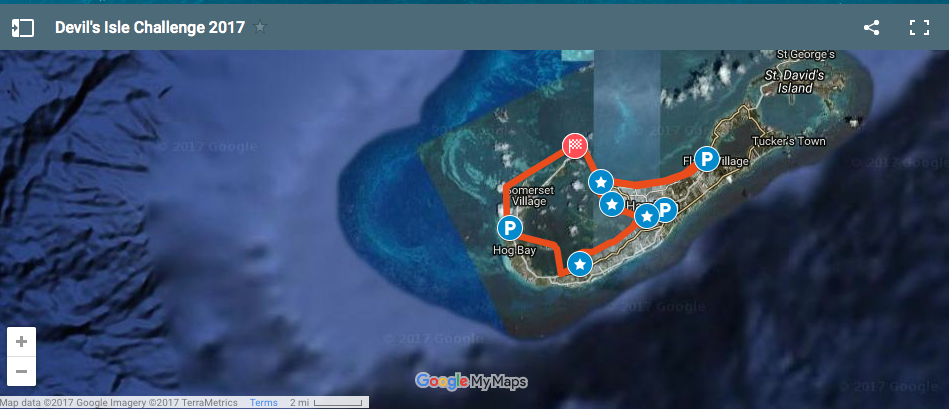
Devil’s Isle Challenge in Bermuda; these course types and events all call for what I like to call the “push through factor.”
The “push through factor” is something I refer to when I come across an athlete who demonstrates and appears to have no boundaries in their mind, or any obstacle in their mental or physical path. There is absolutely nothing that will get in the way of them achieving their goal.
There are no excuses, just more reps and more sets to do. There is no bad day on the water, just another great training session. There are always more laps to paddle, more interval sprints to improve your time on, and so on. There are always lessons learned. Anyone you know come to mind?
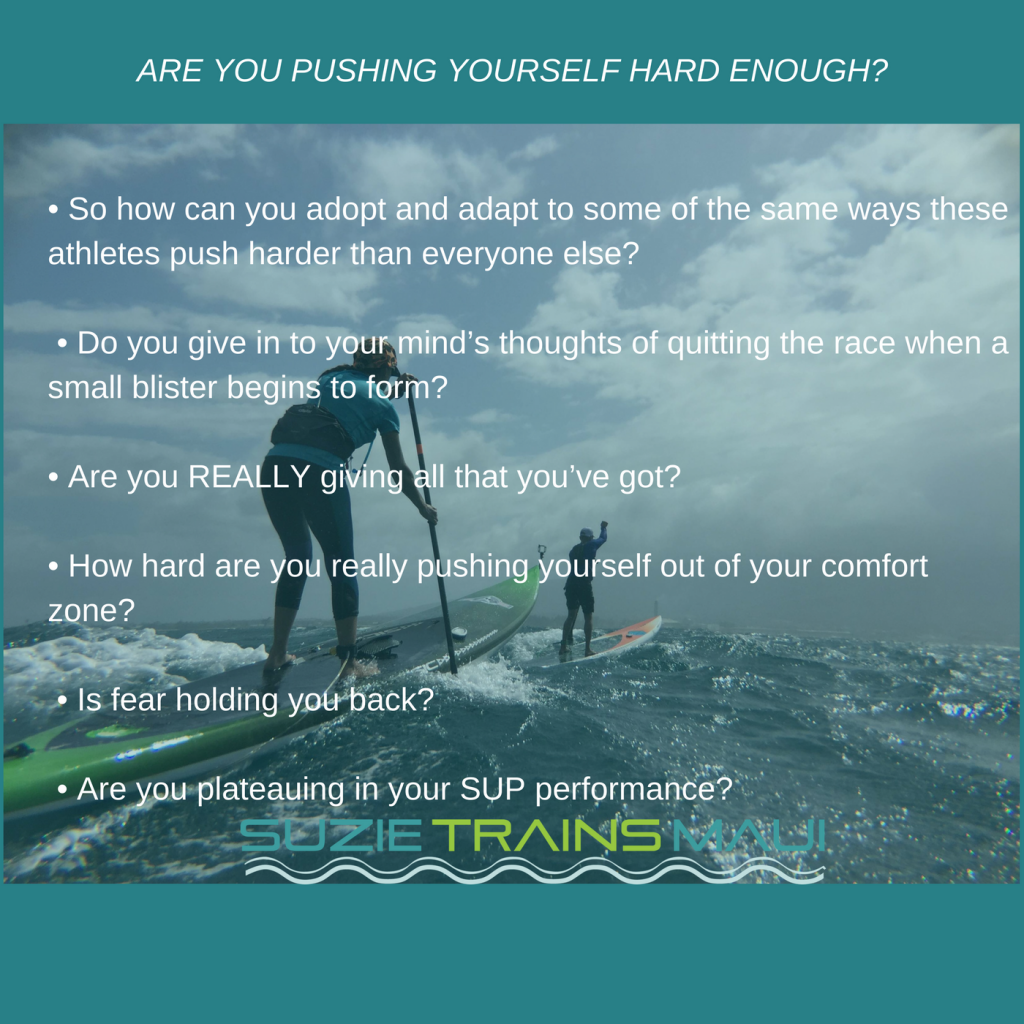
I think this kind of paddler with this mindset have a common theme and a common “push through factor” that runs on automatic and is pulsing through their veins. This is obvious not only in their paddling lives but in all that they do. They have fantastic visualization skills, are very positive and are usually very upbeat. Nothing seems to bother them. They are fearless almost to a fault.
Here are some tips on how to increase your Push Through Factor :
- Train and paddle with someone better than you. Observe everything they do from nutrition to time on the water, to their workout routine.
- Hire a real professional ( hello?? ) to help push you harder and safely.
- Better to keep your eyes focused on an object to paddle to in the distance as your goal, instead of your clock. This will allow you to get “in the zone” and push harder and harder.
- Be patient, as building this level of performance takes time for you mind but more importantly for your body to adapt. You don’t want to go too hard too fast so you break down.
- Know your limits and the breaking point. You can push yourself to exhaustion at times but not all the time. The harder you train and push, the longer it takes for your body to recover. Don’t risk it.
- Recognize your real paddling skills and know that if you want to do the M20 solo you can but you have to go through some distance training pain first.
- When paddling on the water, add 1-5 more laps, miles whatever it takes. Go freaking APE.
Slowly but surely you can measure your new results. Even if you just implement a few of this tips, you will see and feel a tremendous lift in your attitude and outlook. You will gain more confidence and you become more inspired to push and paddle harder. Before you know it, you’ll find yourself rising to the occasion more with more paddling success and keep yourself on the leader board.
I hope this article was helpful and keeps you fresh and performing at your best.
I’d love for you to share this with your friends and also please leave a comment on how you’re training to help push yourself, or how simple changes in your stroke improved your overall times. We all can learn more.
I help people around the world and all levels of paddlers. I specialize in downwind paddling but I’m very good at fine tuning anyone’s stroke and helping them find ways to help increase their total body power.
 I can also help you via SKYPE as I love to travel the airways to your gym or home gym. Better, maybe one day you can come to Maui and I can paddle with you and make you invincible. You can contact me through this website.
I can also help you via SKYPE as I love to travel the airways to your gym or home gym. Better, maybe one day you can come to Maui and I can paddle with you and make you invincible. You can contact me through this website.
Aloha and Mahalo for your continued support in our awesome Ohana of paddlers.
Thank you to my supports/sponsors: KAENON Polarized Eyewear, RAWElements USA, Indo Board Balance Trainer, Bluesmiths, ImagineSurf
Suzie Cooney,
Suzie Trains Maui
Check out my new website and get your Maliko Run Gear here: Maliko Run™


